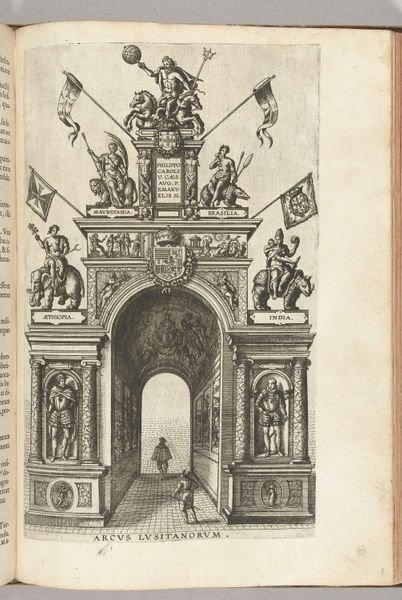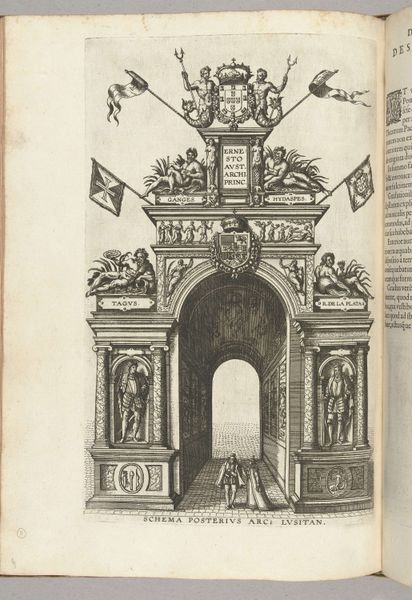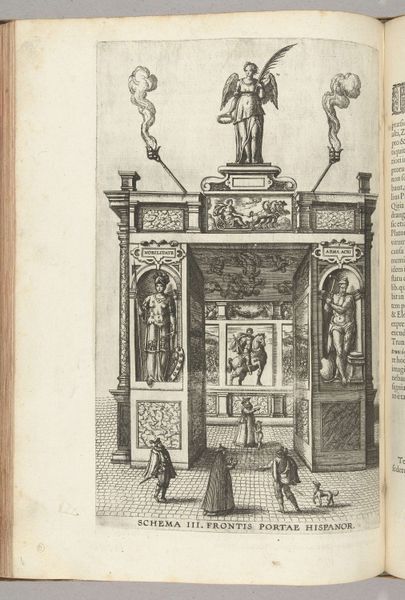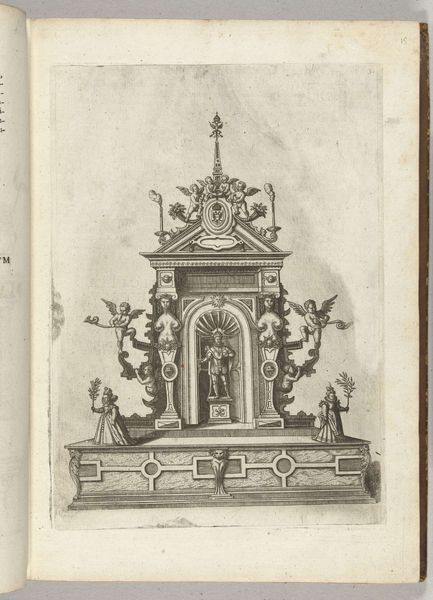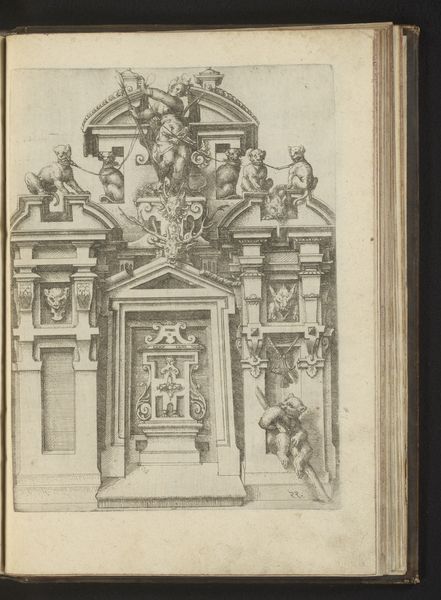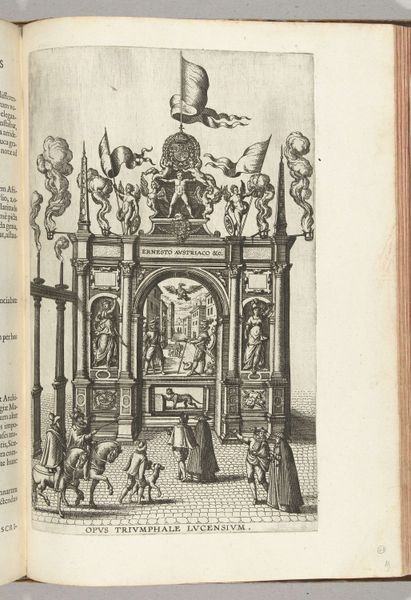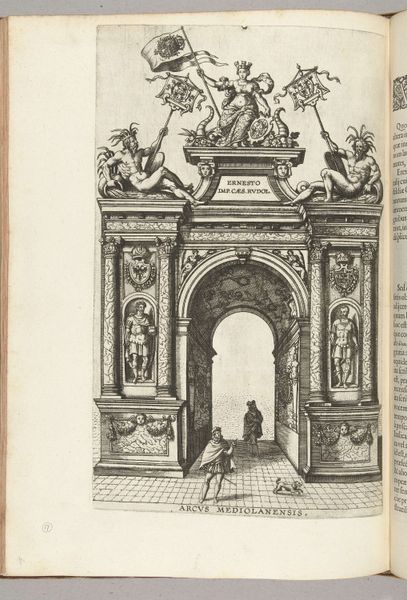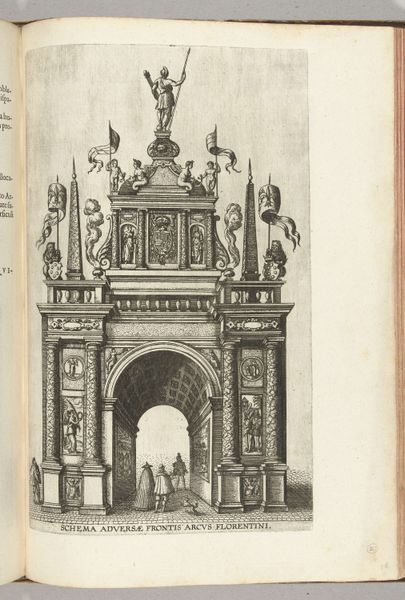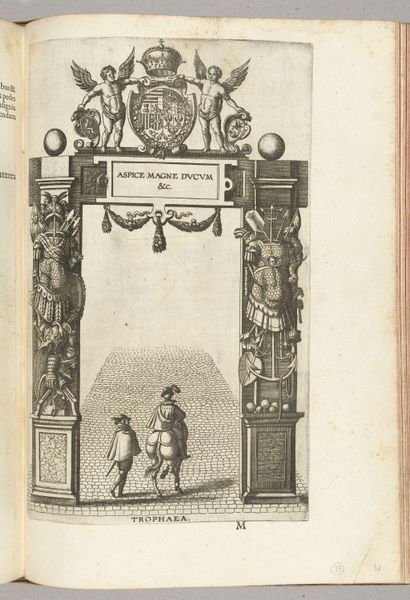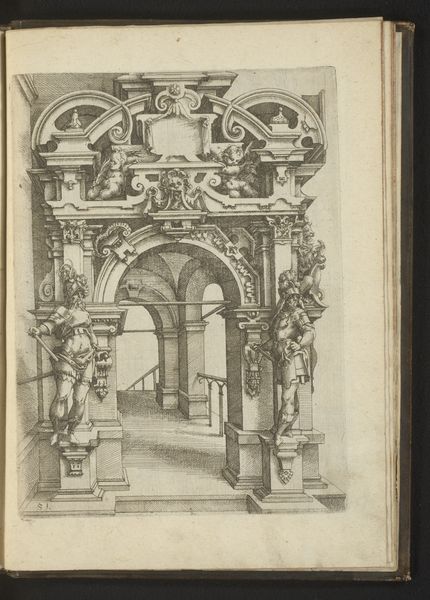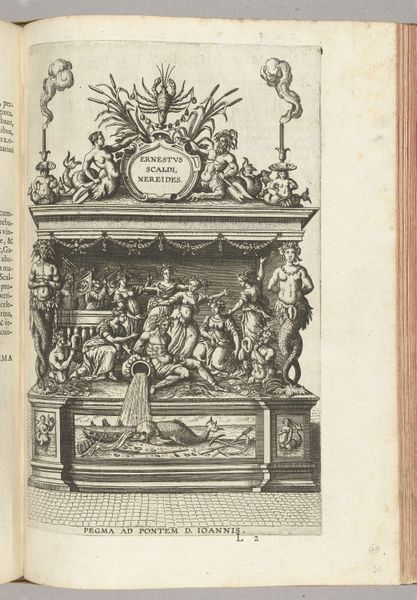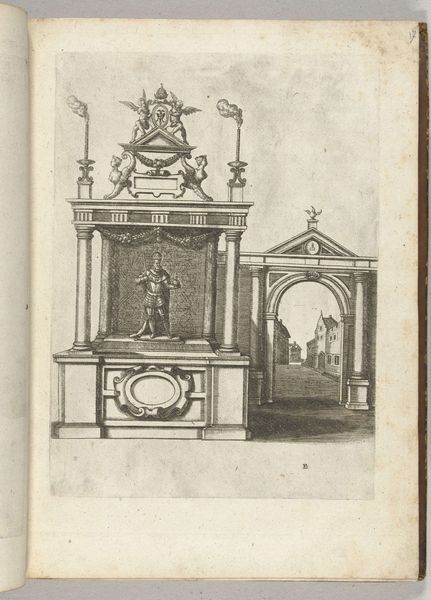
Triomfboog ter ere van de stad (achterzijde), 1594 1594 - 1595
0:00
0:00
pietervanderiborcht
Rijksmuseum
drawing, print, engraving, architecture
#
drawing
#
baroque
# print
#
engraving
#
architecture
Dimensions: height 327 mm, width 200 mm
Copyright: Rijks Museum: Open Domain
Editor: This engraving by Pieter van der Borcht I, made around 1594, is titled "Triomfboog ter ere van de stad (achterzijde)," or "Triumphal Arch in honor of the city (rear)." The composition feels very staged and theatrical, even performative. What do you see in this piece? Curator: What I see is a meticulously crafted piece of propaganda. Triumphal arches were potent symbols, often erected for victorious leaders or to commemorate significant events. The inscription "ERIGIS ERNESTO" points to its dedication to a figure of power, likely Archduke Ernest of Austria. This arch becomes a stage for legitimizing power, particularly at a time of political upheaval and religious conflict in the Netherlands. The arch’s function exceeds aesthetics; it acts as a political instrument, designed to shape public perception and cement authority. How do the surrounding emblems, like the crane and entwined snakes, inform this triumphalist narrative? Editor: I hadn't really considered the dedication as having such an agenda, more than celebrating a moment in history. With these lenses in mind, the presence of cherubs and heraldic symbols suggests an effort to enshrine this ruler. Curator: Exactly. They operate as a carefully constructed image that invites interrogation. Who does this arch really serve, and whose narrative does it exclude or suppress? Think about the architectural context too: arches often connect disparate spaces and groups. Consider the people walking through the arch in the engraving, presumably subjects of the archduke, what feelings are conveyed as they approach. Editor: Looking at it now, it feels less like a celebration and more like a statement of dominance. It almost seems imposing in light of this intention, I can understand the history of trauma behind celebratory events with similar underlying intentions. Curator: Indeed. Analyzing the intersection of art, power, and social context allows us to recognize how visual culture operates within systems of control. Understanding that can affect the viewers' own relationship with contemporary power structures. Editor: I see, approaching art history with this perspective makes the artwork less about aesthetic appeal and more about broader narratives concerning historical politics and culture. I will have to bring that knowledge with me!
Comments
No comments
Be the first to comment and join the conversation on the ultimate creative platform.
